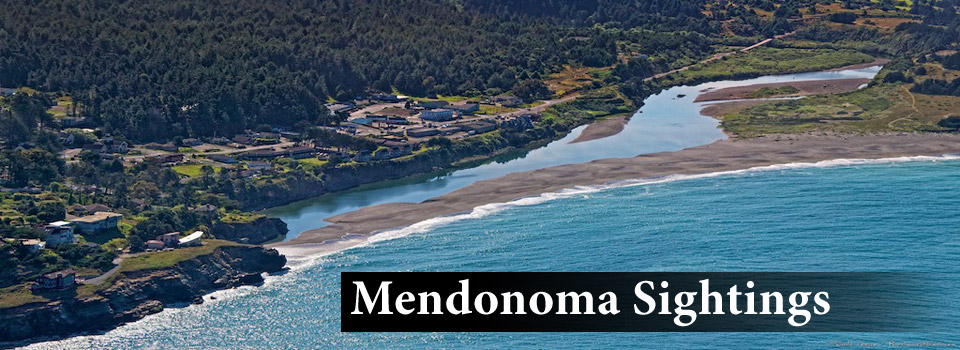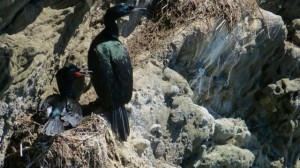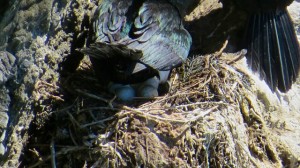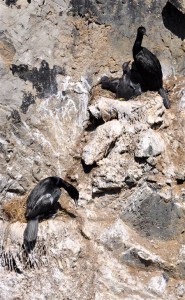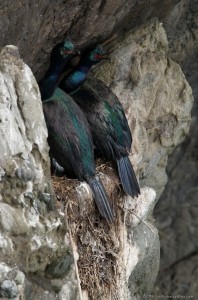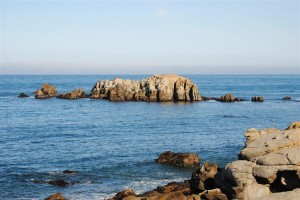Last week Richard Kuehn took Rick and me to a very special spot on The Sea Ranch. We were told to be quiet as we made our way out to a point where we could observe the nesting Pelagic Cormorants on the protected bluff face. Below is a female sitting on eggs with her mate next to her.
And a resettling of the female allowed Rich to get a photo of her eggs. It looks like four eggs are in the nest.
There were perhaps a dozen or so nests and the males were coming and going, bringing food to the nesting females. It was magical to observe them and not disturb them in any way.
To hear their calls, here's a link to the Cornell Lab of Ornithology: http://www.allaboutbirds.org/guide/pelagic_cormorant/sounds
Thanks to Rich for allowing me to share his photos and for showing Rick and me this spot. I will share a few more photos of this place soon.
Bonus sighting - the first Wild Rhododendrons have begun their bloom. Rick and I saw the first bloom yesterday, Thursday, April 25.
